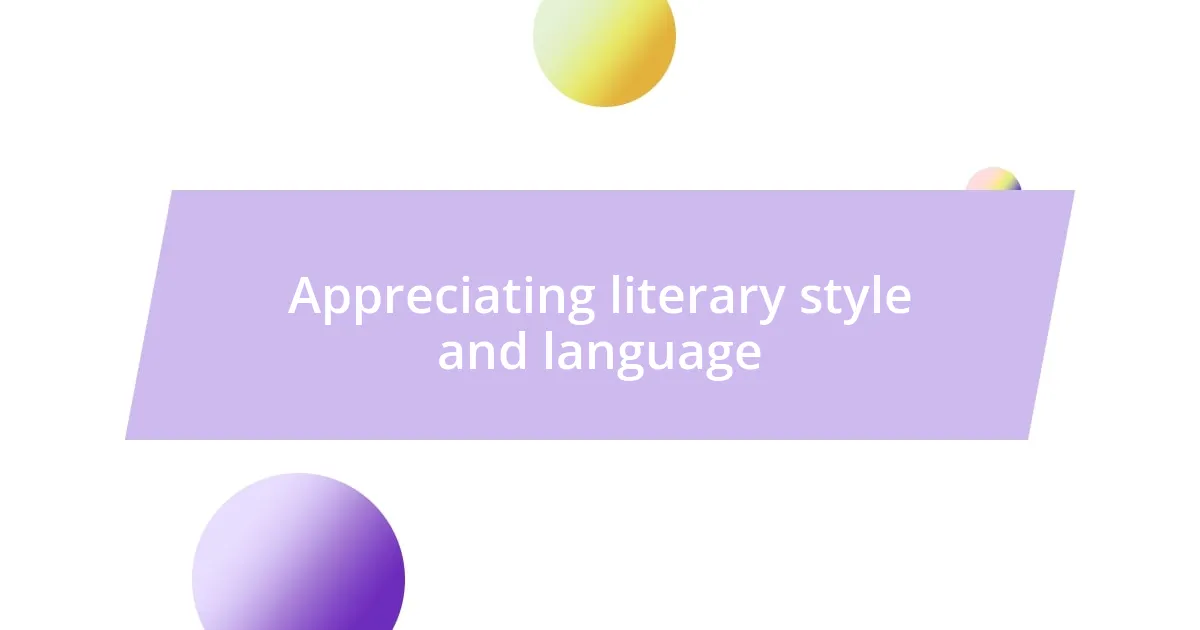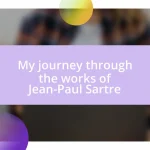Key takeaways:
- Orhan Pamuk’s storytelling transcends cultural and geographical boundaries, prompting readers to re-evaluate their perspectives on identity and heritage.
- He employs various narrative techniques, such as non-linear timelines and multiple perspectives, enhancing emotional depth and encouraging introspection.
- Pamuk’s literary style intertwines poetic and philosophical elements, evoking vivid imagery and fostering a deep connection with readers.
- His use of cultural references and Turkish idioms enriches the narrative, emphasizing the universal power of storytelling in bridging cultural divides.

Understanding Orhan Pamuk’s impact
Orhan Pamuk’s storytelling resonates deeply, piercing through cultural and geographical barriers. I remember the first time I picked up “My Name is Red.” The way he weaves art, history, and love into a single narrative made me rethink not just the story, but the world around me. Have you ever encountered a book that transformed your perspective? That’s the magic of Pamuk’s prose; it draws you in while simultaneously pushing you to explore your own thoughts and emotions.
His novels often mirror Turkey’s complex identity, blending the old with the new. Pamuk’s ability to articulate the struggle between tradition and modernity felt particularly poignant when I visited Istanbul. Walking the streets, I realized how profoundly his storytelling captures the essence of both the city and its people, prompting me to question how we define cultural heritage in a rapidly changing world.
Pamuk doesn’t simply tell stories; he ignites conversations about existence, memory, and the act of storytelling itself. I find myself reflecting on his themes long after I’ve turned the last page. Can literature reclaim and reshape our narratives? In my experience, Pamuk’s work invites us to wrestle with such questions, compelling us to engage with the nuances of life in ways that linger, challenge, and inspire.

Analyzing narrative techniques used
Pamuk employs a variety of narrative techniques that enchant readers and create a rich tapestry of storytelling. One of the more striking methods he uses is the non-linear timeline. I recall being particularly captivated by how “The Museum of Innocence” unfolds. The shifting timelines not only kept me on my toes but also mirrored the characters’ emotional journeys, enhancing the poignancy of their experiences. It’s this deliberate manipulation of time that adds layers to the narrative, encouraging deeper reflection.
- Multiple Perspectives: Pamuk often reveals events through various character viewpoints, allowing readers to understand the complexities of human emotions and societal influences.
- Metafiction: He invites readers to consider the nature of storytelling itself, weaving self-referential elements that invite analysis and introspection.
- Vivid Imagery: His descriptive language paints a picture that immerses me in the setting, making me feel as though I’m walking the streets alongside his characters.
- Symbolism: Objects and motifs recur throughout his works, imbuing the narrative with deeper meanings that resonate beyond the surface story.
Pamuk’s narrative techniques create a multifaceted reading experience that resonates on emotional and intellectual levels, inviting readers into a dialogue that often lingers long after the last page is turned.

Appreciating literary style and language
Pamuk’s literary style is truly a feast for the senses. Every time I delve into his work, I’m struck by the way he dances between the poetic and the philosophical. For instance, the lush descriptions in “Snow” transport me to the cold, snowy streets of Kars; I can almost feel the chill in the air and see the frost on windowpanes. Have you ever found yourself lost in a landscape created by a writer’s words? That’s the beauty of Pamuk’s language—it evokes vivid imagery and shapes our emotional responses to the narrative.
There’s a rhythmic quality to his prose that draws me in, almost like a conversation with an old friend. I remember feeling deeply connected to the intimate explorations of love and longing in “The Black Book.” Pamuk’s choice of words often feels deliberate and loaded, each sentence offering a new shade of meaning. This layered writing compels me to pause and reflect; it raises the question—how does language shape our understanding of complex emotions? In my experience, Pamuk’s language creates an emotional landscape where readers like me can freely navigate our own feelings.
As I reflect on the language in his stories, I’m constantly amazed at how he plays with cultural references and historical context. For example, his nuanced use of Turkish idioms adds depth to the characters and their experiences. I often find myself looking up these terms, uncovering a richer understanding of the narrative. Does language hold the power to connect us more profoundly across cultures? In my exploration of Pamuk’s work, I’ve come to believe it does, reminding me that storytelling is a universal bridge to the human experience.














